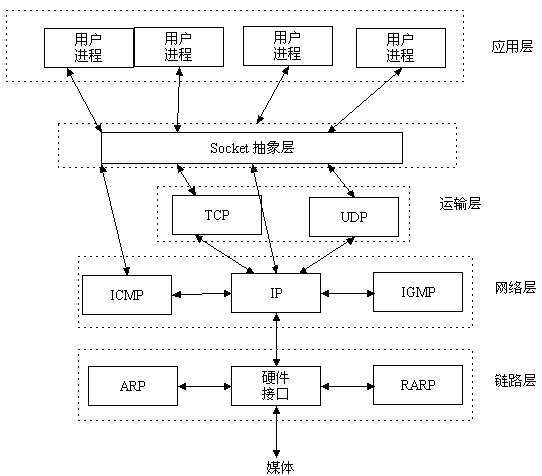标签:
Socket:

CFSocket:
Sockets are the most basic level of network communications. A socket acts in a similar manner to a telephone jack. It allows you to connect to another socket (either locally or over a network) and send data to that socket.
The most common socket abstraction is BSD sockets. CFSocket is an abstraction for BSD sockets. With very little overhead, CFSocket provides almost all the functionality of BSD sockets, and it integrates the socket into a run loop. CFSocket is not limited to stream-based sockets (for example, TCP), it can handle any type of socket.
You could create a CFSocket object from scratch using the CFSocketCreate function, or from a BSD socket using the CFSocketCreateWithNative function. Then, you could create a run-loop source using the function CFSocketCreateRunLoopSource and add it to a run loop with the function CFRunLoopAddSource. This would allow your CFSocket callback function to be run whenever the CFSocket object receives a message.
CFNetwork:
CFNetwork is a low-level, high-performance framework that gives you the ability to have detailed control over the protocol stack. It is an extension to BSD sockets, the standard socket abstraction API that provides objects to simplify tasks such as communicating with FTP and HTTP servers or resolving DNS hosts. CFNetwork is based, both physically and theoretically, on BSD sockets.
Just as CFNetwork relies on BSD sockets, there are a number of Cocoa classes that rely on CFNetwork (NSURL, for example). In addition, the Web Kit is a set of Cocoa classes to display web content in windows. Both of these classes are very high level and implement most of the details of the networking protocols by themselves. Thus, the structure of the software layers looks like the image:
CFNetwork and other software layers on OS X:
CFNetwork and Core Foundation structure:
Reference:CFSocket相关
标签:
原文地址:http://www.cnblogs.com/xwjack1554239786/p/5166604.html